Self-Priming Water Pump: Your Irrigation Ally

Water pumps are used to convey water from one point to another, at different heights and distances. With a water pump you can irrigate gardens, allotments or larger grounds, empty swimming pools or ponds, and deal with emergency situations by draining flooded floors.
Not all water pumps are the same: there are different types such as centrifugal, self-priming or manually primed; surface or submerged; and with electric or internal combustion engine. In this article we explain how a surface-mounted, self-priming centrifugal water pump works and how to use one for irrigation.
How a self-priming water pump works
A centrifugal self-priming water pump has an intake port where the water enters, before being rotated by an impeller and pushed towards the pump’s outlet port. The impeller increases the flow rate (and therefore pressure) of the water.
Surface water pumps are designed to be placed higher than the water you want to pump away, rather than submerged in it: they are used to extract water from ditches, rainwater reserves and even wells. The impeller therefore needs to give the water sufficient energy to overcome this height difference, or to maintain sufficient operating pressure to irrigate a large surface area as evenly and effectively as possible, reaching the furthest distance. In addition, the water pump must ensure that the water overcomes the pressure losses that are to be expected in an irrigation system. Such losses are caused by hose connections and bends, but particularly valves, fertigation systems etc.
Suction height is the distance between the surface of the water source and the intake port of the water pump, whereas head is the sum of this distance and the height that the water is lifted, i.e. the altitude difference between the intake port and the water outlet pipe.
When evaluating which irrigation water pump to buy, the head is one of the key criteria along with flow rate—the amount of water pumped over a certain time period—and the power of the engine or motor. These parameters must be matched against your irrigation needs, including: the water requirement of your plants, the soil characteristics, surface area, the type of irrigation system you have chosen, and the maximum distance that the irrigation system hoses need to cover.
For example, the Oleo-Mac WP 300 self-priming water pump with 1 kW petrol engine has a maximum head of 36 m, suction height of 7 m and flow rate of up to 150 l/min, which you can adjust using the throttle.
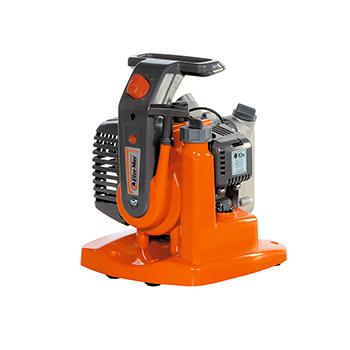
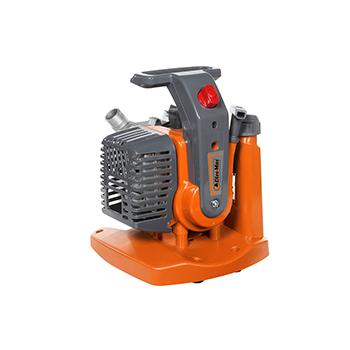
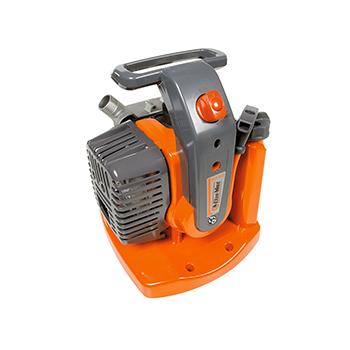
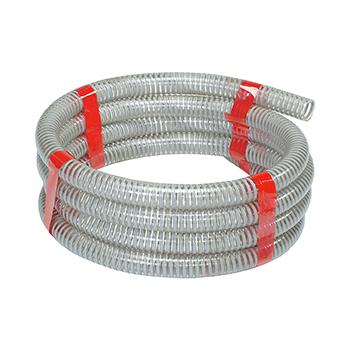
A self-priming water pump for irrigation systems
You can use a self-priming water pump to water your garden or allotment by connecting the pump’s outlet port to a water delivery system. This could be a standard hosepipe, an irrigation system with lawn sprinklers, or a micro-irrigation (or drip irrigation) system for trees, hedges, flower beds or allotments, which supplies water through hoses or driplines.
Also in the garden or allotment, an irrigation water pump can be used to make the most of rainwater—a precious and free resource—by drawing it from a water butt.
In the countryside, a self-priming water pump is indispensable for watering areas far from the supply source, which might be a canal, for example. Or whenever it is necessary to convey water to the watering location in a tank, and then distribute it precisely using the water pump. Additionally, in similar cases where there is no power outlet or possibility of using an electric pump, a water pump such as the Oleo-Mac WP 300 with internal combustion engine is really the only viable solution.
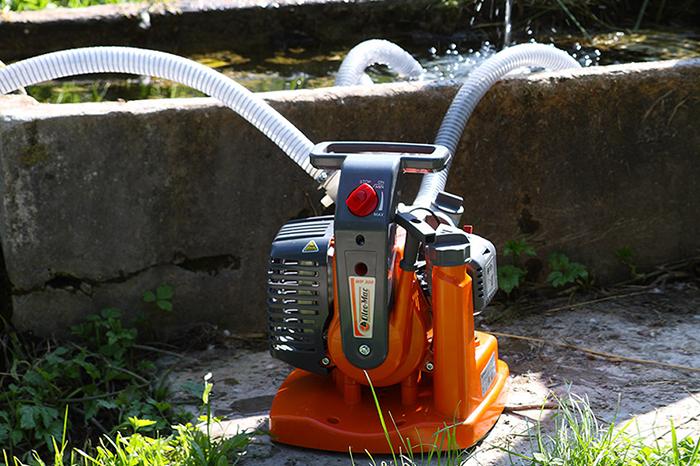
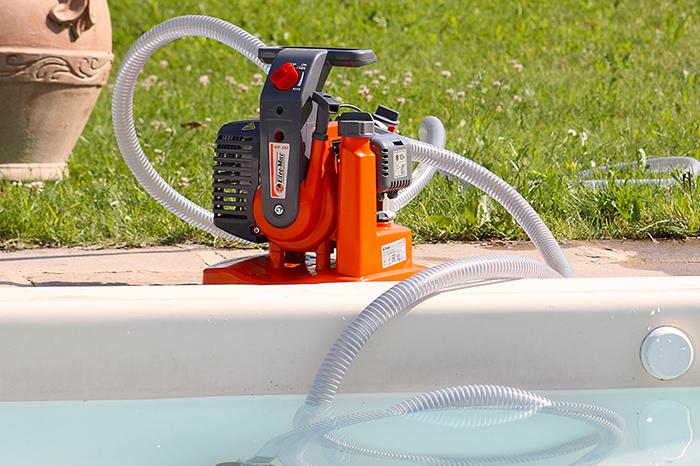
Water pumps draw water through a rigid tube such as a spiral hose. But before using a water pump for irrigation, you need to prime it. What does that mean? Priming the pump removes air from the suction pipe by filling it with liquid.
With a self-priming water pump you don't need to fill the suction pipe with water: simply fill the pump body with water. Once the pump is started, the water will expel the air contained in the suction pipe.
Remember not to turn on the water pump without priming it first, otherwise the impeller will run dry and potentially damage the engine. For the same reason, it is important to securely attach the water suction hose to the intake port so that only water enters the pump, rather than air.
If you are interested in water pumps for irrigation, you can also read our Oleo-Mac blog article on how to water plants with an irrigation pump.



